 In 2023, Russians will continue to actively consume chicken eggs; it is predicted that total consumption will be more than 42 billion pieces. This number remains roughly the same as last year, when 46.1 billion eggs were consumed. The Rospoultry Union, an organization that unites Russian poultry enterprises, notes that the country will produce enough eggs to satisfy the domestic needs of the population.
Galina Bobyleva, director of Rosptitsesoyuz, said that consumption is expected to be 288 pieces per capita per year. This number has remained stable in recent years, indicating a constant demand for eggs among Russians. In 2010, consumption was 270 pieces per capita, and in.
Read more...
In 2023, Russians will continue to actively consume chicken eggs; it is predicted that total consumption will be more than 42 billion pieces. This number remains roughly the same as last year, when 46.1 billion eggs were consumed. The Rospoultry Union, an organization that unites Russian poultry enterprises, notes that the country will produce enough eggs to satisfy the domestic needs of the population.
Galina Bobyleva, director of Rosptitsesoyuz, said that consumption is expected to be 288 pieces per capita per year. This number has remained stable in recent years, indicating a constant demand for eggs among Russians. In 2010, consumption was 270 pieces per capita, and in.
Read more...
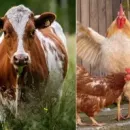 Russian food manufacturers, who presented their products under the Made in Russia brand at the Food Africa 2023 exhibition, held more than 250 b2b meetings with potential partners over 3 days. The total export potential of the meetings is estimated at $20 million. During the exhibition, a contract worth $1 million was also signed.
Visitors to the exhibition and potential partners of Russian exporters appreciated the variety of grain crops, meat and dairy products, fresh frozen Karelian berries, confectionery, high-quality canned fish and other food products. Russian manufacturers also presented packaging materials for the food industry and logistics services.
Read more...
Russian food manufacturers, who presented their products under the Made in Russia brand at the Food Africa 2023 exhibition, held more than 250 b2b meetings with potential partners over 3 days. The total export potential of the meetings is estimated at $20 million. During the exhibition, a contract worth $1 million was also signed.
Visitors to the exhibition and potential partners of Russian exporters appreciated the variety of grain crops, meat and dairy products, fresh frozen Karelian berries, confectionery, high-quality canned fish and other food products. Russian manufacturers also presented packaging materials for the food industry and logistics services.
Read more...
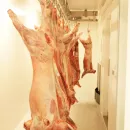 Rosselkhoznadzor and the General Administration of Customs (GTU) of China discussed a draft protocol for the export of Russian pork to the Chinese market. This was reported by the press service of the Russian department.
This document sets out the rules for the supply of this type of meat. In particular, it is planned that it will be supplied to the Asian country from regions and territories free from African swine fever (ASF). This measure is called the principle of regionalization. For many years, Beijing did not agree to this approach when supplying meat and insisted that exports were possible only after Russia was completely free from this disease. The fact.
Read more...
Rosselkhoznadzor and the General Administration of Customs (GTU) of China discussed a draft protocol for the export of Russian pork to the Chinese market. This was reported by the press service of the Russian department.
This document sets out the rules for the supply of this type of meat. In particular, it is planned that it will be supplied to the Asian country from regions and territories free from African swine fever (ASF). This measure is called the principle of regionalization. For many years, Beijing did not agree to this approach when supplying meat and insisted that exports were possible only after Russia was completely free from this disease. The fact.
Read more...
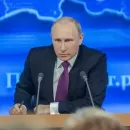 Peasant (farm) farms provide 15% of the total volume of agricultural products on the domestic market, and their products contribute to the diversity of the assortment, noted Russian President Vladimir Putin, summing up the year at a large press conference.
“As for small farms, of the total amount of assistance allocated by the state to support the agricultural sector, 40% goes to support farming,” the president emphasized.
Small livestock enterprises are provided with comprehensive assistance through a range of programs. “And we will continue this work,” the head of state assured.
Excellent results
Vladimir Putin thanked Russian farmers.
Read more...
Peasant (farm) farms provide 15% of the total volume of agricultural products on the domestic market, and their products contribute to the diversity of the assortment, noted Russian President Vladimir Putin, summing up the year at a large press conference.
“As for small farms, of the total amount of assistance allocated by the state to support the agricultural sector, 40% goes to support farming,” the president emphasized.
Small livestock enterprises are provided with comprehensive assistance through a range of programs. “And we will continue this work,” the head of state assured.
Excellent results
Vladimir Putin thanked Russian farmers.
Read more...
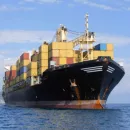 .
Read more...
.
Read more...
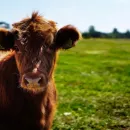 To import breeding material - farm animals, as well as semen and embryos obtained from them - a special conclusion and results of molecular genetic examination will be required. The State Duma adopted this law in the second and immediately third, final reading at a plenary session on Thursday, December 14. The law will come into force on September 1, 2024, with the exception of one provision that will come into effect later, on March 1, 2026.
“The main goal of the law is to ensure that breeding products are healthy,” commented Vladimir Kashin, chairman of the State Duma Committee on Agrarian Issues, one of the authors of the document, during the.
Read more...
To import breeding material - farm animals, as well as semen and embryos obtained from them - a special conclusion and results of molecular genetic examination will be required. The State Duma adopted this law in the second and immediately third, final reading at a plenary session on Thursday, December 14. The law will come into force on September 1, 2024, with the exception of one provision that will come into effect later, on March 1, 2026.
“The main goal of the law is to ensure that breeding products are healthy,” commented Vladimir Kashin, chairman of the State Duma Committee on Agrarian Issues, one of the authors of the document, during the.
Read more...
 At the end of nine months of 2023, Russia's GDP grew by 3%, in the third quarter - by 5.5% compared to the same period last year. Rosstat reports this.
A significant share of GDP growth was provided by sectors of the military-industrial complex against the backdrop of large injections of budget money, compensating for the impact of sanctions on the economy, Reuters reports.
In September, the Ministry of Economy predicted GDP growth in 2023 by 2.8%. The head of the department, Maxim Reshetnikov, said in early December that growth would be higher than this estimate and amount to 3.5%. President Vladimir Putin made the same.
Read more...
At the end of nine months of 2023, Russia's GDP grew by 3%, in the third quarter - by 5.5% compared to the same period last year. Rosstat reports this.
A significant share of GDP growth was provided by sectors of the military-industrial complex against the backdrop of large injections of budget money, compensating for the impact of sanctions on the economy, Reuters reports.
In September, the Ministry of Economy predicted GDP growth in 2023 by 2.8%. The head of the department, Maxim Reshetnikov, said in early December that growth would be higher than this estimate and amount to 3.5%. President Vladimir Putin made the same.
Read more...
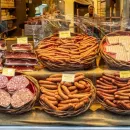 The meat products market is one of the most dynamically developing sectors in the global economy. This market is projected to reach a staggering $68.9 billion by 2028, according to market research firm MarketsandMarkets. This means that the meat products sector will grow at an annual rate of 9.2% during the forecast period.
One of the leading reasons for this growth is the increase in poultry consumption in many countries and regions of the world. This trend is observed not only in developed countries, but also in developing, densely populated regions such as China, India, Indonesia, Malaysia, Pakistan, the Philippines and Vietnam. In these countries, poultry.
Read more...
The meat products market is one of the most dynamically developing sectors in the global economy. This market is projected to reach a staggering $68.9 billion by 2028, according to market research firm MarketsandMarkets. This means that the meat products sector will grow at an annual rate of 9.2% during the forecast period.
One of the leading reasons for this growth is the increase in poultry consumption in many countries and regions of the world. This trend is observed not only in developed countries, but also in developing, densely populated regions such as China, India, Indonesia, Malaysia, Pakistan, the Philippines and Vietnam. In these countries, poultry.
Read more...
 Meat consumption in Russia continues to grow steadily, and in 2024 Russians are expected to eat 83 kg of meat per capita for the first time. This forecast was announced by the head of the Center for Industry Expertise of Rosselkhozbank, Andrey Dalnov, at the international scientific and practical conference “Pig Breeding-2023”.
He also noted that in 2023, Russian livestock farmers achieved impressive results, which had a positive impact on the nutrition of the population. In the structure of meat consumption, pork has moved closer to broiler, and next year they are expected to compete for first place. Milk consumption is also expected to be at its highest level.
Read more...
Meat consumption in Russia continues to grow steadily, and in 2024 Russians are expected to eat 83 kg of meat per capita for the first time. This forecast was announced by the head of the Center for Industry Expertise of Rosselkhozbank, Andrey Dalnov, at the international scientific and practical conference “Pig Breeding-2023”.
He also noted that in 2023, Russian livestock farmers achieved impressive results, which had a positive impact on the nutrition of the population. In the structure of meat consumption, pork has moved closer to broiler, and next year they are expected to compete for first place. Milk consumption is also expected to be at its highest level.
Read more...
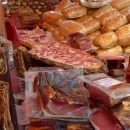 In the last year, sales of meat products in Russia increased by 3.2%. This important discovery was made at the XV International Scientific and Practical Conference “Pig Breeding-2023” by GFK consultant Anastasia Anoprieva. She shared interesting facts about meat spending patterns and sales growth trends.
The main factors influencing the growth in sales of meat products are an increase in the frequency of purchases by 2.1% and an increase in the average price by 3.4%. This means that consumers are purchasing meat more frequently and are also willing to pay more for quality products.
Meat occupies a significant share of expenses in the consumer basket,.
Read more...
In the last year, sales of meat products in Russia increased by 3.2%. This important discovery was made at the XV International Scientific and Practical Conference “Pig Breeding-2023” by GFK consultant Anastasia Anoprieva. She shared interesting facts about meat spending patterns and sales growth trends.
The main factors influencing the growth in sales of meat products are an increase in the frequency of purchases by 2.1% and an increase in the average price by 3.4%. This means that consumers are purchasing meat more frequently and are also willing to pay more for quality products.
Meat occupies a significant share of expenses in the consumer basket,.
Read more...
© Inline LLC 2015-2025. Privacy Policy | Terms of Service